Continue reading for our analysis...

Although you might think of snakes as typically slithering around on land, some are actually great swimmers. They use the same wavy movement that they use on land to swim through water. They don’t swim completely submerged; rather, they use this undulating movement to keep momentum and stay either completely above or only slightly submerged underwater.
Cottonmouth snakes are a species of pit viper native to the southeastern United States. They are poisonous vipers that are considered even more toxic than copperheads. In the video below, you can see The Bearded Biologist, a man with a YouTube channel, encounter this curious snake.
The video opens with a rather peaceful kayak ride on a quiet creek. The man is quietly and gently exploring the area. The water is dark, and murky green, and there are many trees surrounding the space, which makes for an incredibly lush, green backdrop. There’s something floating in the water just up ahead, and The Bearded Biologist spots it right away. As his kayak gets closer, he realizes it’s a cottonmouth viper.
The cottonmouth is floating quietly along, letting the gentle current of the creek take it without making any of those undulating movements that keep it moving forward. It seems to spot the kayaker and turns its head over towards him. Instinctively, The Bearded Biologist puts up his paddle to defend himself if need be.
The cottonmouth remains curious, its tongue slithering outward in the air, but the current takes it away from the kayaker. It does start slithering toward him, maintaining a curiosity, but eventually lets the natural current of the creek take it away from the kayaker.
Throughout the encounter, The Bearded Biologist keeps his paddle out, toward the cottonmouth, in defense mode. The camera catches the scene perfectly, and there’s a shot when the viper is right in the center of the screen that you can appreciate just how close it got to the kayaker.
As the current pulls it away from the kayak, the cottonmouth waves its tail a bit, as if fighting the current slightly, still intrigued by the man on the kayak. For a couple of seconds, it keeps slithering toward the camera. The final scene shows when it stops swimming against the current and continues on its way.
Is It Normal for a Cottonmouth to Pursue You?
Like their fellow pit vipers copperheads and rattlesnakes, cottonmouths prefer to wait for their favorite prey to come to them. This means they prefer to lie in wait for mice and voles and are generally uninterested in humans.
So why was that swimming reptile interested in the kayak? No one can tell for certain.
Thankfully, its swimming skills notwithstanding, it could not swim against the tide and was borne away by the current. A rather lucky occurrence that resulted in a happy ending for the kayaker.
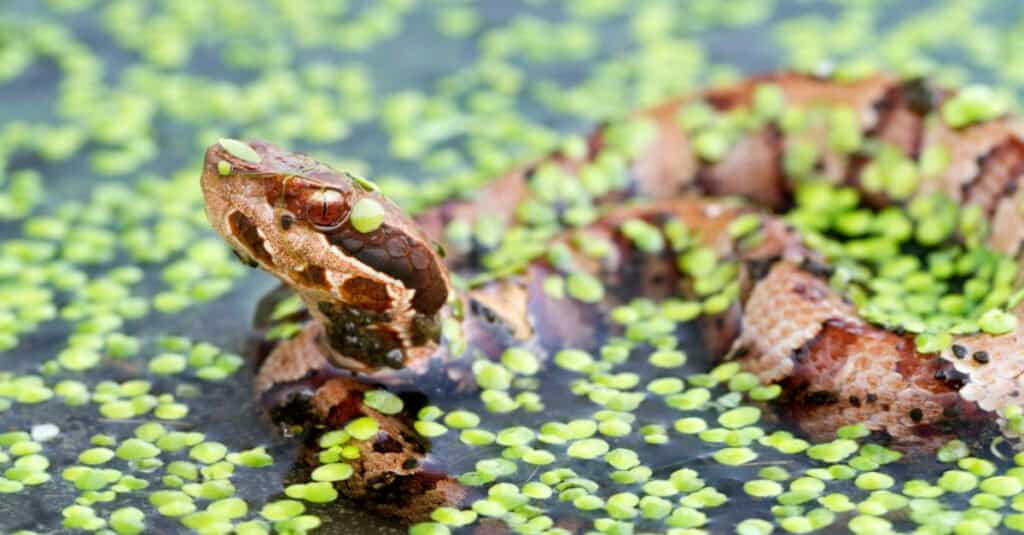
Juvenile cottonmouths have vibrant bands of color to warn you of their venomous capabilities.
©Mark_Kostich/Shutterstock.com
How Venomous Are Cottonmouths?
While cottonmouth snakes are venomous and anyone bitten by the snakes should seek immediate medical attention, their bites are rarely fatal.
A study of fatal snake bites in the United States in the American Journal of Emergency Medicine studied 101 fatal bites between 1989 and 2018. They found that rattlesnakes accounted for 90% of fatal bites. In that time period, only 2% of fatal snake bites came from cottonmouth snakes.
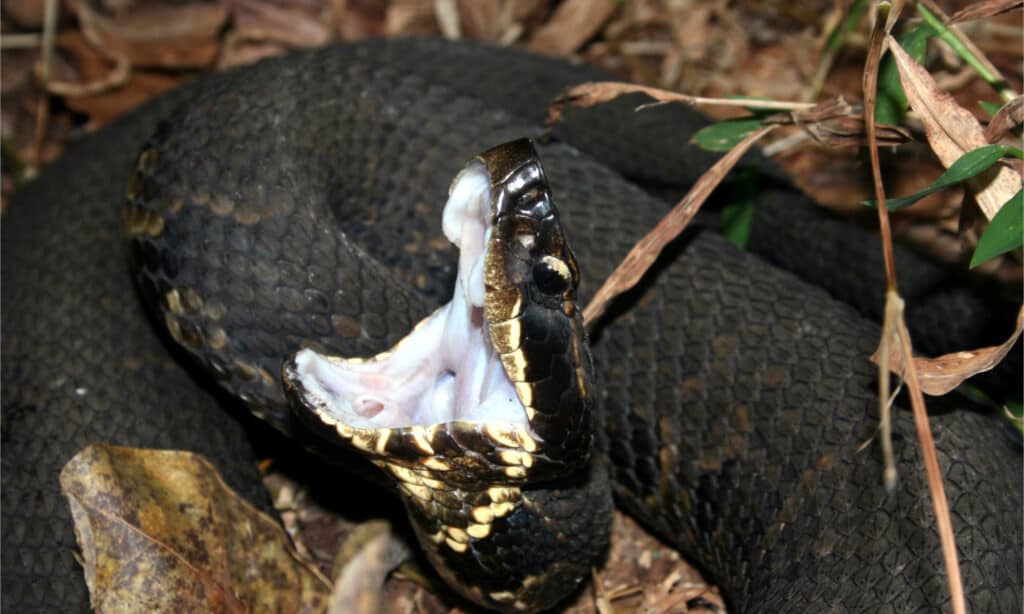
Cottonmouths are excellent swimmers with a potent, venomous bite.
©Psychotic Nature/Shutterstock.com
Where Do Cottonmouths Live?
Cottonmouths, also known as water moccasins, are native to the Southeastern United States. Their habitat spans from as far south as Florida to the lower regions of Indiana and Illinois in the north. Cottonmouths are semi-aquatic, meaning they are equally adapted to travel across land or water. Though they cannot breathe underwater, water moccasins are incredibly talented swimmers and have been observed holding their breath for over an hour at a time.
Cottonmouths tend to be found in regions that offer a variety of wet and dry environments such as marshes, swampland, creeks, estuaries, and floodplains. Their diet largely consists of amphibians and rodents who also dwell in these damp locales.
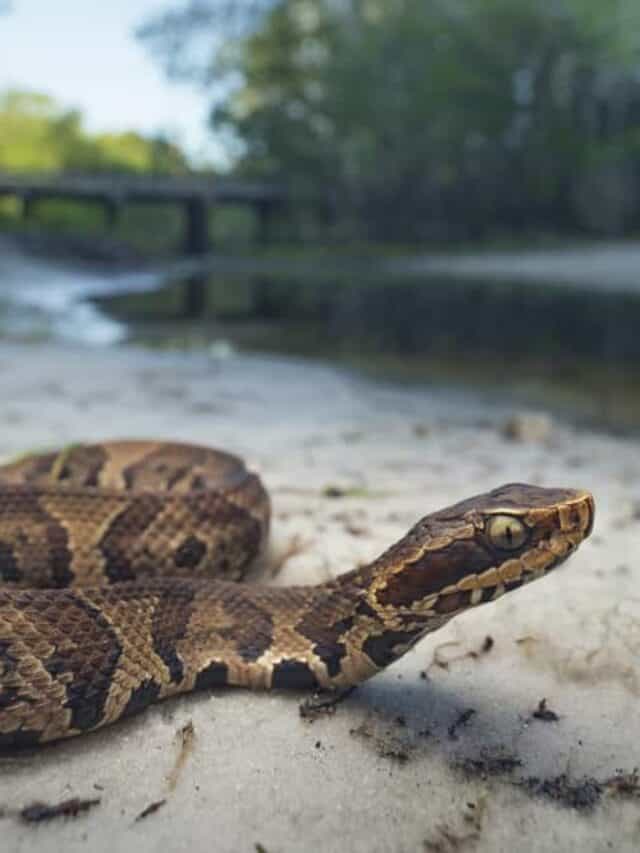
Cottonmouths are semi-aquatic; they have adapted to live on land and in water.
©Kristian Bell/Shutterstock.com
Cottonmouth Lifespan
Most water moccasins do not make it to adulthood in the wild, with most becoming food to a host of other predators such as cats, raccoons, snapping turtles, and eagles. If a cottonmouth is able to survive until adulthood it is likely to live approximately 10 years in the wild. Accurate data has not been gathered on water moccasins’ potential lifespans in captivity, though one outlier was able to live to be 24 years old under the care of an experienced handler.
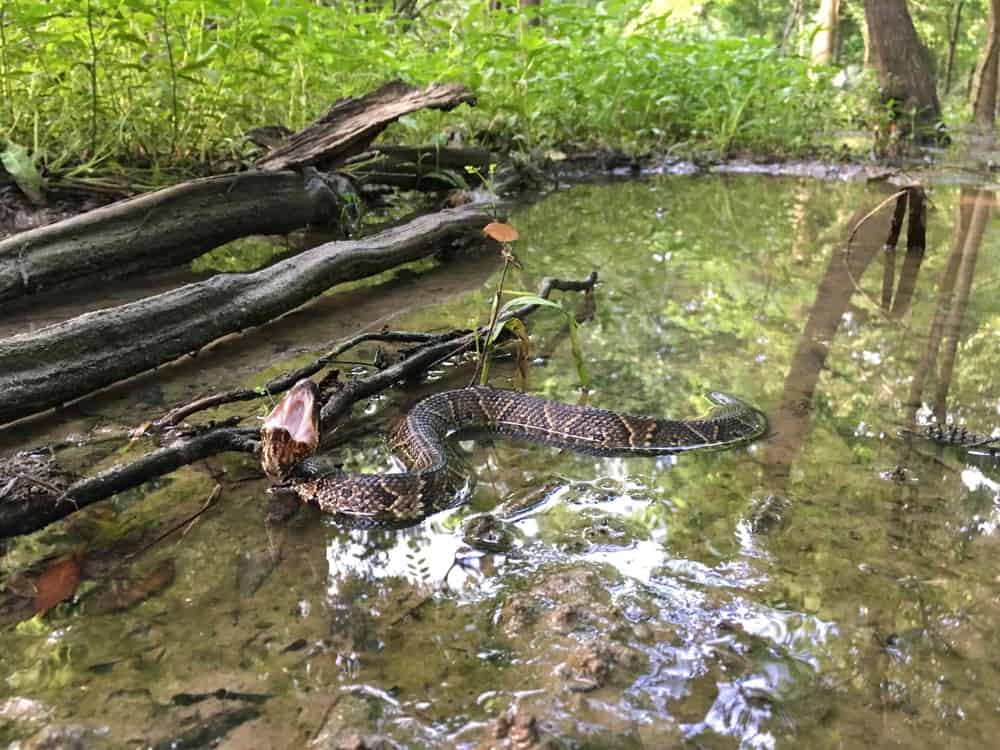
On the rippling surface of the river, it can be hard to distinguish a fallen branch from a deadly water moccasin.
©Joe Farah/Shutterstock.com
Other Amazing Animal Videos You May Like
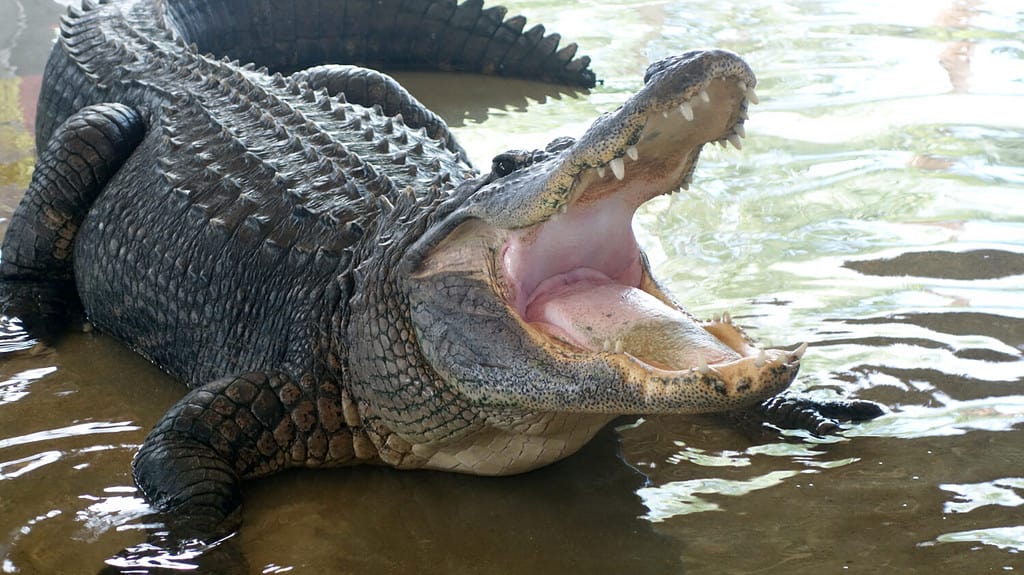
Crocodiles have the ability to thrive in freshwater and saltwater environments.
©Ernie Hounshell/Shutterstock.com
Ever fished for gators?
Watch as this Australian tour guide teases Dominator, a saltwater crocodile who holds the record as the second-largest croc currently in existence. He dangles an appetizing chunk of meat attached to a string on a bamboo pole. Just as Dominator gets close enough to attain it, he lifts the meat out of the way.
Australia does not have alligators; only crocodiles inhabit the region. These crocodiles have the ability to thrive in both freshwater and saltwater environments, and they can be found along a significant portion of Australia’s northern coastline. Kakadu National Park is home to both freshwater and saltwater crocodiles, so if you happen to spot one, it is recommended to inquire with your guide to determine the specific species you are observing.
Discover the "Monster" Snake 5X Bigger than an Anaconda
Every day A-Z Animals sends out some of the most incredible facts in the world from our free newsletter. Want to discover the 10 most beautiful snakes in the world, a "snake island" where you're never more than 3 feet from danger, or a "monster" snake 5X larger than an anaconda? Then sign up right now and you'll start receiving our daily newsletter absolutely free.
Thank you for reading! Have some feedback for us? Contact the AZ Animals editorial team.






